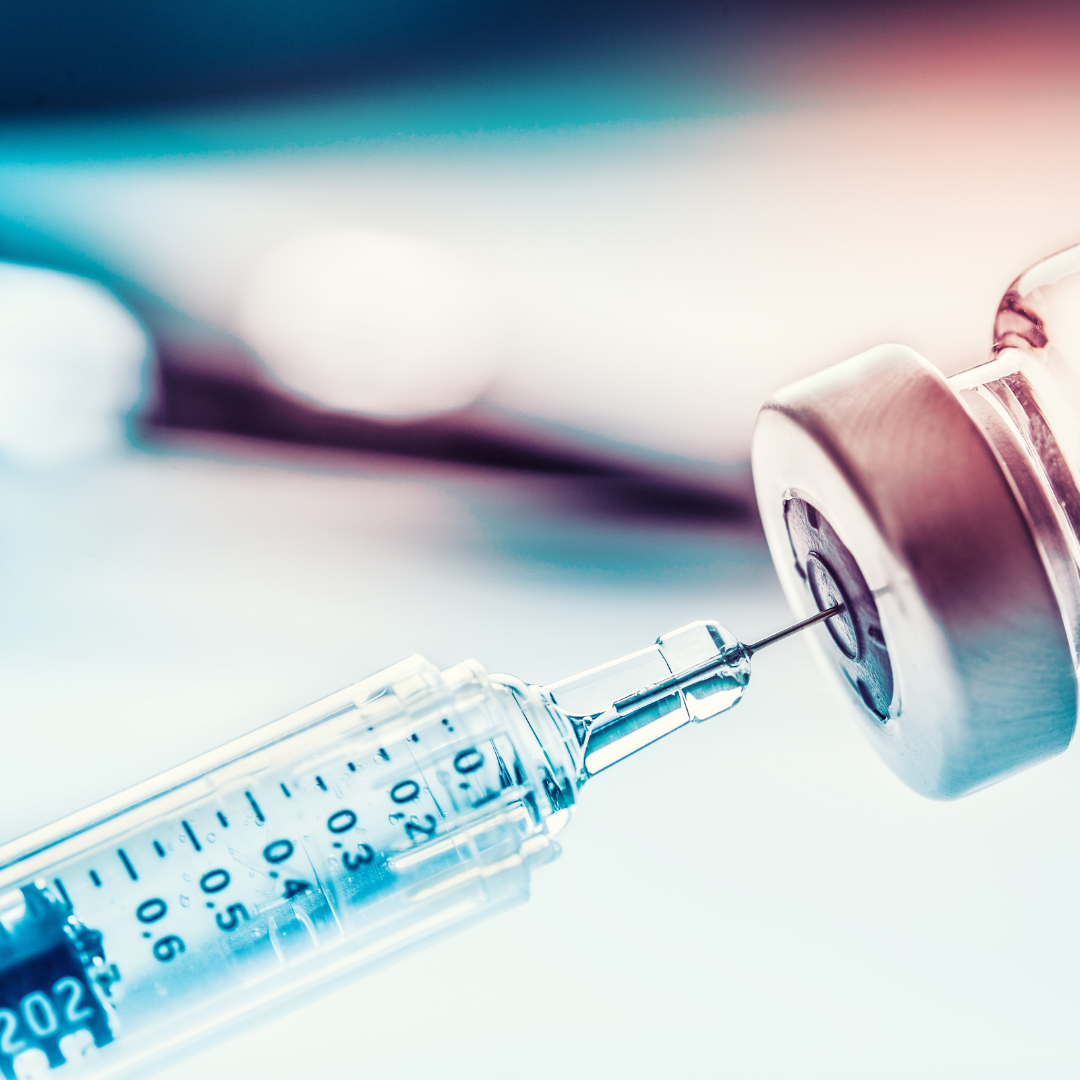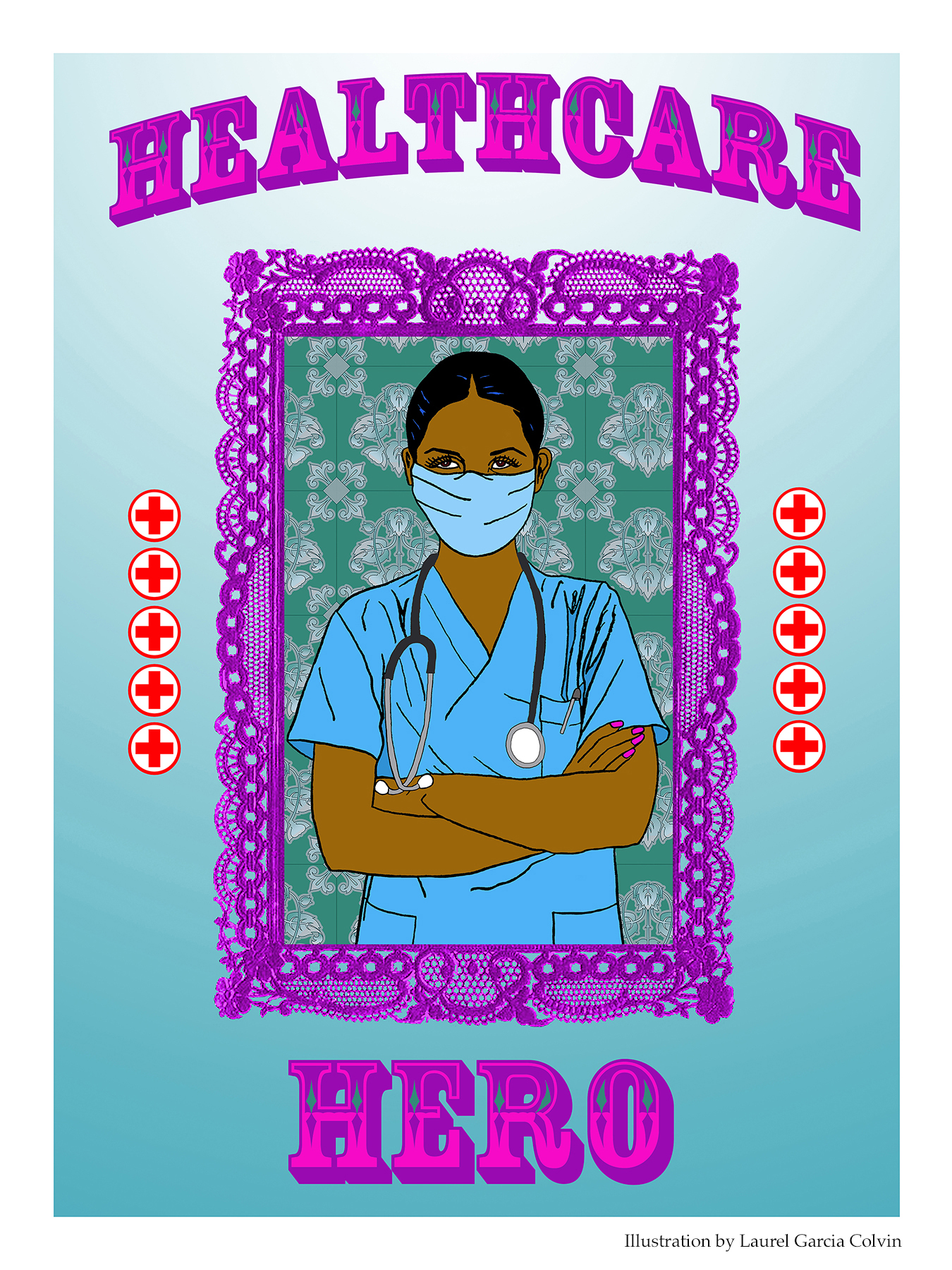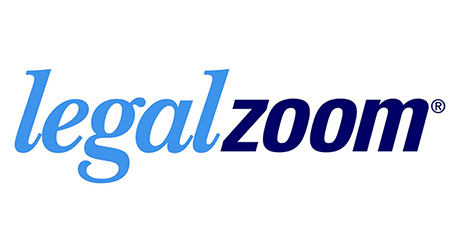Tag Archive for: Covid-19
 On January 19, 2021, Logos Associate Holly Helstrom was quoted in a Forbes article about the struggle many organizations are facing around COVID-19 vaccination policies. The article details how companies are split in terms of whether or not to require employees to get the vaccine respectively.
On January 19, 2021, Logos Associate Holly Helstrom was quoted in a Forbes article about the struggle many organizations are facing around COVID-19 vaccination policies. The article details how companies are split in terms of whether or not to require employees to get the vaccine respectively.
Helstrom, an Adjunct Instructor at Columbia University’s Fu Foundation School of Engineering who teaches a course on First Amendment rights for employees, explained that an employer has the legal right to introduce a COVID-19 vaccine policy if they’re a private sector at-will employer.
“Refusal to get a Covid-19 vaccine if your employer is requiring one could get you fired and your employer would be within their legal rights to do so,” said Helstrom.
Helstrom advised organizations to use its values to guide vaccination decisions. “Having clarity on one’s values, whether from the employer or employee perspective, can make the decision easier,” she said. “If individual liberty is more important to you than job security, your decision when navigating this question as an employee will be much easier.”
 On January 18, 2021, Logos Associate Holly Helstrom was quoted in an article on Digiday about how businesses can navigate the need for COVID-19 vaccination policies. Helstrom, an Adjunct Instructor at Columbia University’s Fu Foundation School of Engineering who teaches a course on First Amendment rights for employees, explained that an employer has the legal right to introduce a COVID-19 vaccine policy if they’re a private sector at-will employer.
On January 18, 2021, Logos Associate Holly Helstrom was quoted in an article on Digiday about how businesses can navigate the need for COVID-19 vaccination policies. Helstrom, an Adjunct Instructor at Columbia University’s Fu Foundation School of Engineering who teaches a course on First Amendment rights for employees, explained that an employer has the legal right to introduce a COVID-19 vaccine policy if they’re a private sector at-will employer.
Helstrom explained, “Employers can and have fired employees based on lifestyle choices related to their health, including if they smoke cigarettes or drink alcohol.” She continued, “Refusal to get a Covid vaccine if your employer is requiring one could get you fired, and your employer would be within their legal rights to do so.”
This is an excerpt from a guest column by Helio Fred Garcia, originally published on Commpro.biz on January 4, 2021.
The first American case of COVID-19 was diagnosed on January 20, 2020.
Exactly one year later Joe Biden will be sworn in as the 46th President of the United States.
What happened in the United States in between is different from what happened in other developed countries.
Twenty million Americans contracted COVID-19 between the first case and the end of the year.
2020 was the single deadliest year in American history. The first U.S. COVID-19 fatality was on February 6. By year end another 351 thousand Americans had died from the virus. For context, that is more than all the U.S. combat fatalities in World War II and Vietnam combined, but in a single eleven-month period rather than in the 24 years of those wars. For several weeks in December we were seeing the equivalent of a 9/11 casualty rate every day, with total 2020 COVID-19 fatalities equal to 118 separate 9/11 attacks.
Much of this was avoidable. And yet, here we are. So the question is – why did this happen?
Everything Changed
 It was a year that changed everything: what it means to be “at work” or “at school”; how we visit the doctor; how we greet each other; how we shop for groceries and other goods; how we say goodbye to loved ones as they take their final breath.
It was a year that changed everything: what it means to be “at work” or “at school”; how we visit the doctor; how we greet each other; how we shop for groceries and other goods; how we say goodbye to loved ones as they take their final breath.
It was a year of great trauma: medical, emotional, spiritual, economic, social.
And it was a year that saw great sacrifice and some of the best of humanity: in the front-line medical workers, in the agility of many companies to re-imagine their business models and their product offerings, in the emergence of a new class of heroes – postal workers, delivery drivers, and grocery clerks, who risked infection to keep us supplied.
And it was a year that intensified much that had already been fraying in the fabric of American civic life: hyper-polarization in politics, mistrust of each other and of civic institutions, and the shattering of social and political norms.
In the time of the pandemic we saw the explicit elevation and endorsement of white supremacist and conspiracist groups, such as the Proud Boys and QAnon. But also the largest civil rights protest in American history, with more than 25 million Americans marching in support of Black Lives Matter – and this in the days and weeks following the first wave of reopening after two months of stay-at-home orders.
After decades of one party discrediting science – from refusing to accept the reality of evolution, to redefining when human life begins, to denying the reality of climate change – we saw millions of Americans deny what scientists, public health experts, and their own doctors told them: that the virus is real, that it is deadly, that you can transmit it even when asymptomatic; and that masking, distancing, and handwashing are keys to prevention. The American population seemed to divide into those who believe what science teaches and those who choose not to. But as a popular T-shirt and internet meme noted, Science Doesn’t Care What You Believe.
The pandemic coincided with one of the most bizarre and contentious presidential election campaigns in American history, in which despite no evidence of fraud the sitting president refused to acknowledge defeat and lost more than 50 lawsuits challenging the results. And who for the eight weeks between the election and the new year seemed to give up on being president. He stayed out of sight and silent on anything having to do with the pandemic, even as fatalities approached the 350 thousand mark and infections soared to 20 million, and as he rage-tweeted about the so-called “massive fraud” that had prevented his re-election.
But the hardships were real and were devastating. In the weeks before and after Christmas, hospitalization rates reached record highs, with whole regions, including southern California, reporting zero intensive care beds available. At least one Los Angeles hospital started treating patients in the gift shop; another in a cafeteria; yet another in its chapel. But the real shortage was of medical personnel to treat the record number of patients. Doctors began talking about the need to choose which patients to treat, and which to leave to die.
The nation saw the infection rate grow by a million cases every few days. And despite pleas from public health officials and hospital front-line workers, Americans continued to travel for the holidays, risking what health workers called a surge on top of a surge. And some governors refused to require citizens to wear masks in public. Florida’s governor even forbade Florida cities and counties from requiring masks and social distancing in their jurisdictions. And the White House, the State Department, and other federal agencies held dozens of holiday parties indoors and without a masking requirement: yet more super-spreader events.
Incompetence
It did not need to be this way.
Much of the suffering, the hardship, the sacrifice could have been avoided. It resulted from a lethal combination of incompetence, dishonesty, and neglect.
The United States, alone in the world, intentionally refused to follow or mandate basic public health steps: a national masking, distancing, testing, and contact tracing policy. There was no whole of government response; at best there were fragments of government responses. And some parts of the government seemed to be at war against other parts. Indeed, some parts of government seemed to be at war against themselves, such as the White House Pandemic Task Force, where in a single press conference the politicians would contradict the public health experts, and vice versa.
The president and other senior government officials modeled the opposite of the public health guidelines, remaining unmasked in public and holding super-spreader events where the crowd was unmasked and packed close together – in violation also of local masking and distancing ordinances.
 On December 22, 2020, Logos Associate Holly Helstrom was quoted in an article on Workable.com on the best practices for a COVID-19 vaccination policy for businesses. Workable, a recruitment software company, surveyed a variety of legal experts on whether and how employers can mandate a COVID-19 vaccine for their employees.
On December 22, 2020, Logos Associate Holly Helstrom was quoted in an article on Workable.com on the best practices for a COVID-19 vaccination policy for businesses. Workable, a recruitment software company, surveyed a variety of legal experts on whether and how employers can mandate a COVID-19 vaccine for their employees.
Helstrom, an an Adjunct Instructor at Columbia University’s Fu Foundation School of Engineering who teaches a course on First Amendment rights for employees, explained that an employer has the legal right to introduce a COVID-19 vaccine policy if they’re a private sector at-will employer.
“This is a product of how US labor law and the Constitution are written,” Helstrom noted. “Employers can and have fired employees based on lifestyle choices related to their health, including if they smoke cigarettes or drink alcohol. Refusal to get a COVID vaccine if your employer is requiring one could get you fired and your employer would be within their legal rights to do so.“
 On December 16, 2020, Logos Associate Holly Helstrom was quoted in an article on Healthline on how at-will employers can mandate a COVID-19 vaccine for their employees.
On December 16, 2020, Logos Associate Holly Helstrom was quoted in an article on Healthline on how at-will employers can mandate a COVID-19 vaccine for their employees.
Helstrom, an an Adjunct Instructor at Columbia University’s Fu Foundation School of Engineering who teaches a course on First Amendment rights for employees, explained that an employer has the legal right to mandate policies around lifestyle choices and employers have fired people for lifestyle choices in the past.
“Employers can and have fired employees based on lifestyle choices related to their health, including if they smoke cigarettes or drink alcohol,” she said. “Refusal to get a COVID vaccine if your employer is requiring one could get you fired and your employer would be within their legal rights to do so.”
Helstrom explained that, “your employer is within their legal rights to require you to get a COVID vaccine, if you work for a private sector at-will employer.” However, she did note that rules around vaccination for unionized workers “would likely be a subject for bargaining.”
 On December 7, 2020, Logos Associate Holy Helstrom was quoted in a Legal Zoom article by Stephanie Kurose about the start-up boom emerging in the midst of the COVID-19 pandemic. In the article, Helstrom explained how a moment of global crisis has become an opportunity for start-ups to emerge and thrive.
On December 7, 2020, Logos Associate Holy Helstrom was quoted in a Legal Zoom article by Stephanie Kurose about the start-up boom emerging in the midst of the COVID-19 pandemic. In the article, Helstrom explained how a moment of global crisis has become an opportunity for start-ups to emerge and thrive.
“There is the old saying, ‘necessity is the mother of invention’ and never was it more true than in our coronavirus times,” she noted. “COVID-19’s sudden and dramatic arrival made it very apparent very quickly what people and organizations need to do to succeed and stay healthy in the new world we are living in”
Helstrom continued: “New circumstances create new needs. Startups are responding quickly to this call to fill in the gaps in our economy.”
The except is from an op-ed by Helio Fred Garcia published on December 2, 2020 in Modern Restaurant Magazine.
The COVID-19 pandemic, a crisis has radically reshaped the dining experience and caused a devasting impact on a once booming industry. A September survey by the National Restaurant Association found that 43 percent of full-service operators and 33 percent of limited service operations do not expect to still be in business in six months of things continue as they are. And restaurants are anticipating a total loss of $240 billion this year as a result of the pandemic.
In many ways, the ingenuity of owners and managers has enabled many restaurants to survive this prolonged crisis. As restaurants have introduced innovative solutions to continue serving their customers, such as curb-side pick-up, delivery and drive thru options, or expanded their business to grocery services, the industry has seen marginal gains since the spring. But it has not been enough.
The unfortunate reality is that it is unlikely the industry will be able to bounce back in the coming months. And the restaurant experience when we finally emerge from this pandemic will likely look much different than it did before.
So, what can restaurants at this point in this crisis?
Take Risks Seriously
The US response to COVID-19 pandemic is, in my opinion, the single worst handled crisis in our nation’s history. At the time of writing this, more than 10 million Americans have contracted COVID-19, and nearly a quarter million people have died. And this could have been avoided.
A study published in October by Columbia University’s National Center for Disaster Preparedness found that between 130,000 to 210,000 American fatalities would have been avoided if the nation had consistently applied policies equivalent to what other developed democracies had done.
A foundational principle of crisis response is to understand the scope and specifically the risks that a crisis represents, and then to do all that is necessary to mitigate those risks. The longer it takes to do that, the worse the crisis will get.
As we have seen, the federal government, in particular the current occupant of the White House, failed to take the risks of the pandemic seriously. And President Trump continues to diminish or ignore the risks of COVD-19, even as infection rates spike and more members of his administration test positive for the virus.
The changing of administrations may turn the tide of the country’s response, but we have quite some time before President-Elect Biden can enact meaningful change. In the meantime, the continued lack of a coherent federal response before the inauguration will likely to cause even more harm.
As cases surge across the country, restaurants need to take the risks of COVID-19 seriously. And that means recognizing that half measures won’t work in the long run.
While it may be tempting to continue indoor dining as we head into winter, the growing infection rate, as well as sporadic mask-wearing and social distancing policies across the country, will likely make indoor dining less safe, putting both customers and employees at risk. Restaurants need to recognize and take these risks seriously, and to be prepared to take decisive action early to protect their customers and their employees.
Foresee the Foreseeable
Many crises are not foreseeable. But months into this crisis, there are some thing we can foresee.
We are now in the third wave of the pandemic. In early November, we saw back-to-back record highs for daily cases. The likelihood, if things remain unchanged, is that we will reach a quarter million deaths by Thanksgiving.
President-Elect Joe Biden has signaled that he will take a far more aggressive approach to COVID, and has begun revealing a national strategy. In his acceptance speech, Biden declared, “We cannot repair the economy, restore our vitality, or relish life’s most precious moments… until we get this virus under control.” He continued, “I will spare no effort — or commitment — to turn this pandemic around.”
Restaurants need to be prepared for Biden to enact some form of restrictions for as long as necessary to control the virus. That means restaurants have time to prepare what will foreseeably be one of Biden’s first acts as president.
Take the Pain
No one wants the country to shut down. There is a real and lived cost for all of us in this moment of collective crisis, one that will be felt for years to come. But one of the principles of crisis management is that sometimes we need to take the pain in the short-term in order to thrive in the long-term. This is one of those times.
Restaurants have already taken the brunt of the pain during this pandemic. And previous governmental relief for the restaurant industry has fallen short.
However, restaurants will need to be prepared to take the pain of drastically reducing their operations again, of furloughing their employees, or of shutting down for some period of time. This is a difficult decision for any business make. But it is the only way that we as a nation will make it through this crisis, and ultimately the only way the restaurant industry will be able to truly thrive again.
As restaurants will need to make difficult, but necessary, decisions to protect their customers and staff, the restaurant industry can also be proactive in fighting for relief. Since June, the National Restaurant Association, the Independent Restaurant Association, and other have been actively lobbying for expanded relief for the industry. And as the government transitions in January, the industry may find new allies to aid this cause and ensure the long-term viability of the restaurant industry going forward.
Plan for the Future
While it will likely be necessary to take the pain in the short-term, restaurants can also plan for the long-term.
In crisis management, we know that in every crisis there is opportunity. COVID-19 has changed nearly every part of our society and daily lives. As we come out of this crisis, the restaurant industry, like many others, will not look the same as it did before the pandemic. But that does not mean it cannot as good as it was before. Or that it can be even better.
The industry has already demonstrated its resiliency in the creative ways that restaurants have adapted their business models to survive during the pandemic. Should a national shut down happen, restaurants can use that time to be proactive and plan how they will rebuild after the pandemic has ended.
What will the restaurant and dining experience be after COVID-19? Restaurants can take this time to re-imagine what this experience can be like in a post-COVID-19 world, and then organize their resources to re-invent and re-invigorate both their companies and the industry as a whole.
The restaurant industry has a long road ahead to get through this crisis. But by making smart decisions in a timely way, restaurants can get through this crisis – and help us all do the same.
 On November 9, 2020, Helio Fred Garcia spoke with Will Bachman on his podcast Unleashed about how leaders and organizations can understand prepare for, and respond effectively to a crisis. Unleashed explores how to thrive as an independent professional.
On November 9, 2020, Helio Fred Garcia spoke with Will Bachman on his podcast Unleashed about how leaders and organizations can understand prepare for, and respond effectively to a crisis. Unleashed explores how to thrive as an independent professional.
During their conversation, Garcia discussed the meaning of the word crisis, several key principles of effective crisis response, and ways that Logos Consulting Group works with clients to prepare for and respond to crises.
Listen to the full interview here:
